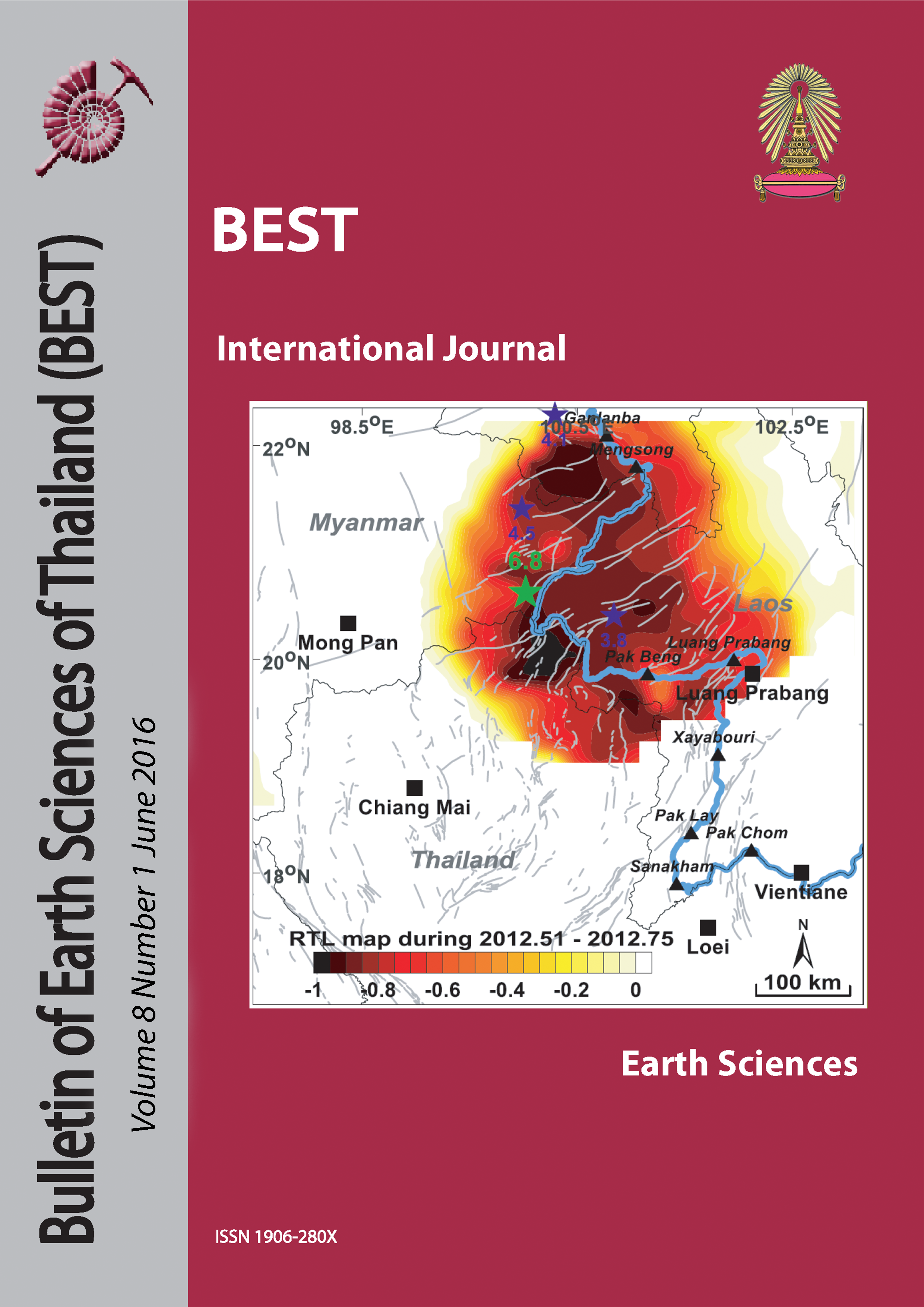Stratigraphic Distribution of Permian Gastropods from Tak Fa Formation in Southern Part of Nakhon Sawan Province, Thailand
Main Article Content
Abstract
The Permian carbonate succession in Tak Fa and Takhli district areas of southern Nakhon Sawan province were grouped in the Tak Fa formation of Saraburi group. The rocks comprise limestones, argillaceous limestones with nodular cherts and intercatalation of shale, which yield several species of gastropods including many invertebrate fossils such as fusulinids, sponges, bivalves, calcareous algae, corals, and bryozoans. The section reaches a thickness of 40 meters. The samples of stratified sampling were collected from Khao Noi and Khao Chai Thong measured sections for petrographic determination. Textures of carbonate rocks consist of bioclastic wackestone to packstone. The gastropod assemblage is dominated by typical Late Palaeozoic cosmopolitan genera with bellerophontoids and pleurotomariines. The distribution of these gastropods suggests the presence of three assemblages zones within distinctive lithofacies: Bellerophon sp. – Glabrocingulum sp. zone, Stegocoelia sp. and Gastropod barren zone. This study indicates that the depositional environment was on shelf lagoon within the carbonate platform varying from back reef to deep of carbonate platform.
Article Details

This work is licensed under a Creative Commons Attribution-NonCommercial-NoDerivatives 4.0 International License.
Copyright © 2008 Department of Geology, Faculty of Science, Chulalongkorn University. Parts of an article can be photocopied or reproduced without prior written permission from the author(s), but due acknowledgments should be stated or cited accordingly.
References
Grant, R.E. 1976. Permian brachiopods from southern Thailand. Paleontological Society Memoir 9, 1–269.
Jaiboon, T. 2001. Biostratigraphy of Tak Fa Formation at Khao Wong and Khao Chakkachan, Amphoe Hong Muang, Changwat Lop Buri with reference to Fusulinids. Master thesis, Department of Geology, Faculty of Science, Chulalongkorn University, Bangkok, Thailand.
Ketwetsuriya, C., Nützel, A. & Kanjanapayont, P. 2014. A new Permian gastropod fauna from the Tak Fa Limestone, Nakhonsawan, Northern Thailand – a report of preliminary results. Zitteliana A 54, 137–146.
Metcalfe, I. & Sone, M. 2008. Biostratigraphy and palaeobiogeography of Lower Permian (lower Kungurian) conodonts from the Tak Fa Formation (Saraburi Limestone),Thailand. Palaeogeography, Palaeoclimatology, Palaeoecology 257, 139–151.
Nakornsri, N. 1976. Geological Map of Ban Mi Sheet ND 47–4, Scale 1:250,000, Geological Survey Division. Department of Mineral Resources, Bangkok, Thailand.
Nakornsri, N. 1981. Geology and Mineral Resources of Amphoe Ban Mi (ND 47–4), Geological Survey Report Number 3. Department of Mineral Resources, Bangkok, Thailand.
Napradit, T. 2005. Permian Fusulinoidean Limestones from East of Changwat Nakhon Sawan. Master thesis, Department of Geology, Faculty of Science, Chulalongkorn University, Bangkok, Thailand.
Sone, M. 2010. A new species of the rare neritopsid gastropod Magnicapitatus from the Guadalupian (Middle Permian) of East Thailand (the Indochina Terrane). Alcheringa 34, 1–6.
Waterhouse, J.B. 1982. An Early Permian cool-water fauna from pebbly mudstones in south Thailand. Geological Magazine 119, 337–354.
Wielchowsky, C.C. & Young, J.D. 1985. Regional facies variations in Permian rocks of the Phetchabun fold and thrust belt, Thailand. Conference on the Geology and Mineral Resource Development of NE Thailand, 41–55.


